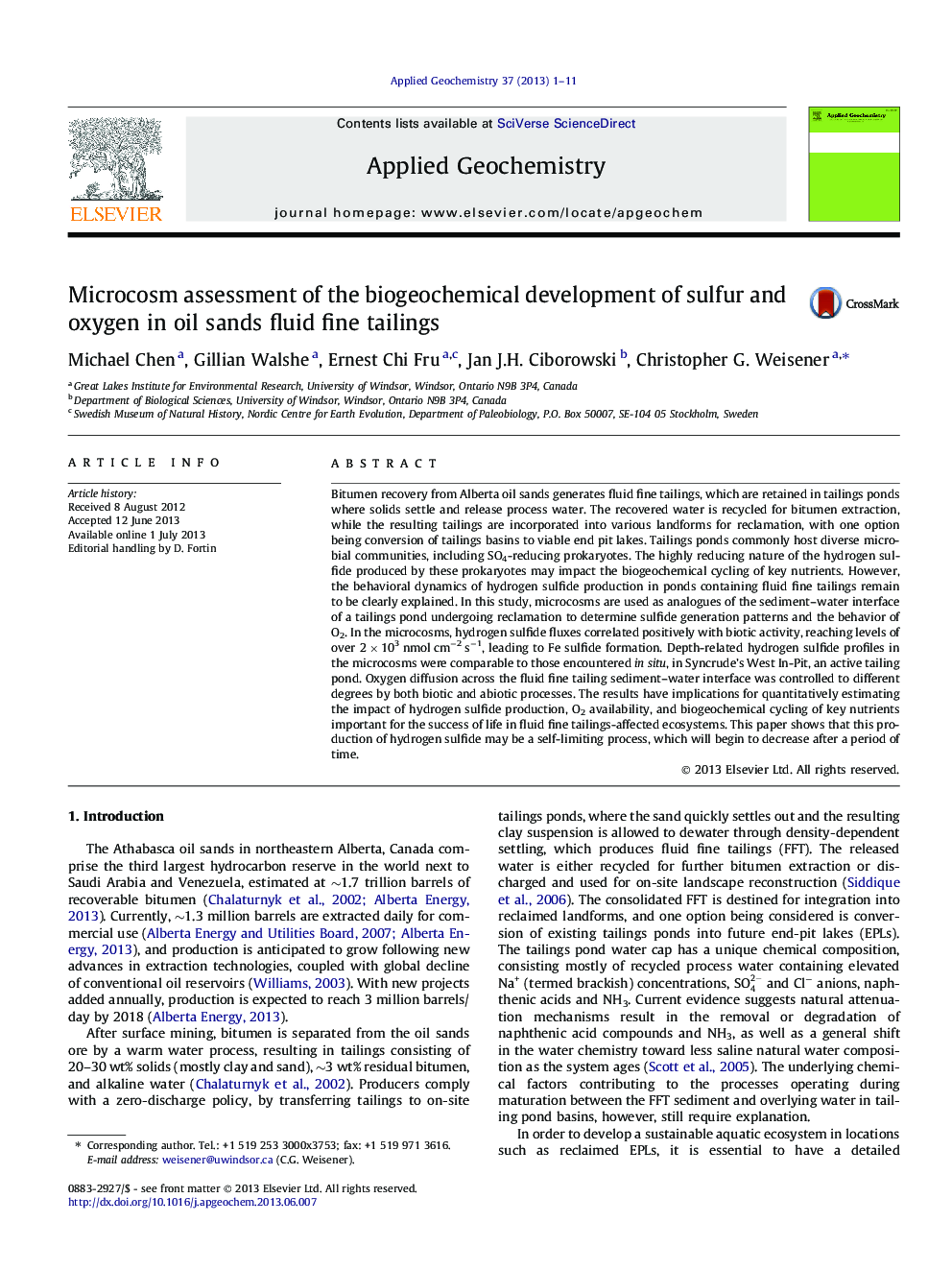| کد مقاله | کد نشریه | سال انتشار | مقاله انگلیسی | نسخه تمام متن |
|---|---|---|---|---|
| 6335288 | 1620254 | 2013 | 11 صفحه PDF | دانلود رایگان |
- Identification of redox transition zones within oil sands waste material.
- Determining sediment oxygen demand behavior for oil sands waste material.
- Lab scale microcosms predict and correlate with field observations.
- Quantification of fluxes of key oxidants and reductants in oil sands tailings.
Bitumen recovery from Alberta oil sands generates fluid fine tailings, which are retained in tailings ponds where solids settle and release process water. The recovered water is recycled for bitumen extraction, while the resulting tailings are incorporated into various landforms for reclamation, with one option being conversion of tailings basins to viable end pit lakes. Tailings ponds commonly host diverse microbial communities, including SO4-reducing prokaryotes. The highly reducing nature of the hydrogen sulfide produced by these prokaryotes may impact the biogeochemical cycling of key nutrients. However, the behavioral dynamics of hydrogen sulfide production in ponds containing fluid fine tailings remain to be clearly explained. In this study, microcosms are used as analogues of the sediment-water interface of a tailings pond undergoing reclamation to determine sulfide generation patterns and the behavior of O2. In the microcosms, hydrogen sulfide fluxes correlated positively with biotic activity, reaching levels of over 2 Ã 103 nmol cmâ2 sâ1, leading to Fe sulfide formation. Depth-related hydrogen sulfide profiles in the microcosms were comparable to those encountered in situ, in Syncrude's West In-Pit, an active tailing pond. Oxygen diffusion across the fluid fine tailing sediment-water interface was controlled to different degrees by both biotic and abiotic processes. The results have implications for quantitatively estimating the impact of hydrogen sulfide production, O2 availability, and biogeochemical cycling of key nutrients important for the success of life in fluid fine tailings-affected ecosystems. This paper shows that this production of hydrogen sulfide may be a self-limiting process, which will begin to decrease after a period of time.
Journal: Applied Geochemistry - Volume 37, October 2013, Pages 1-11
